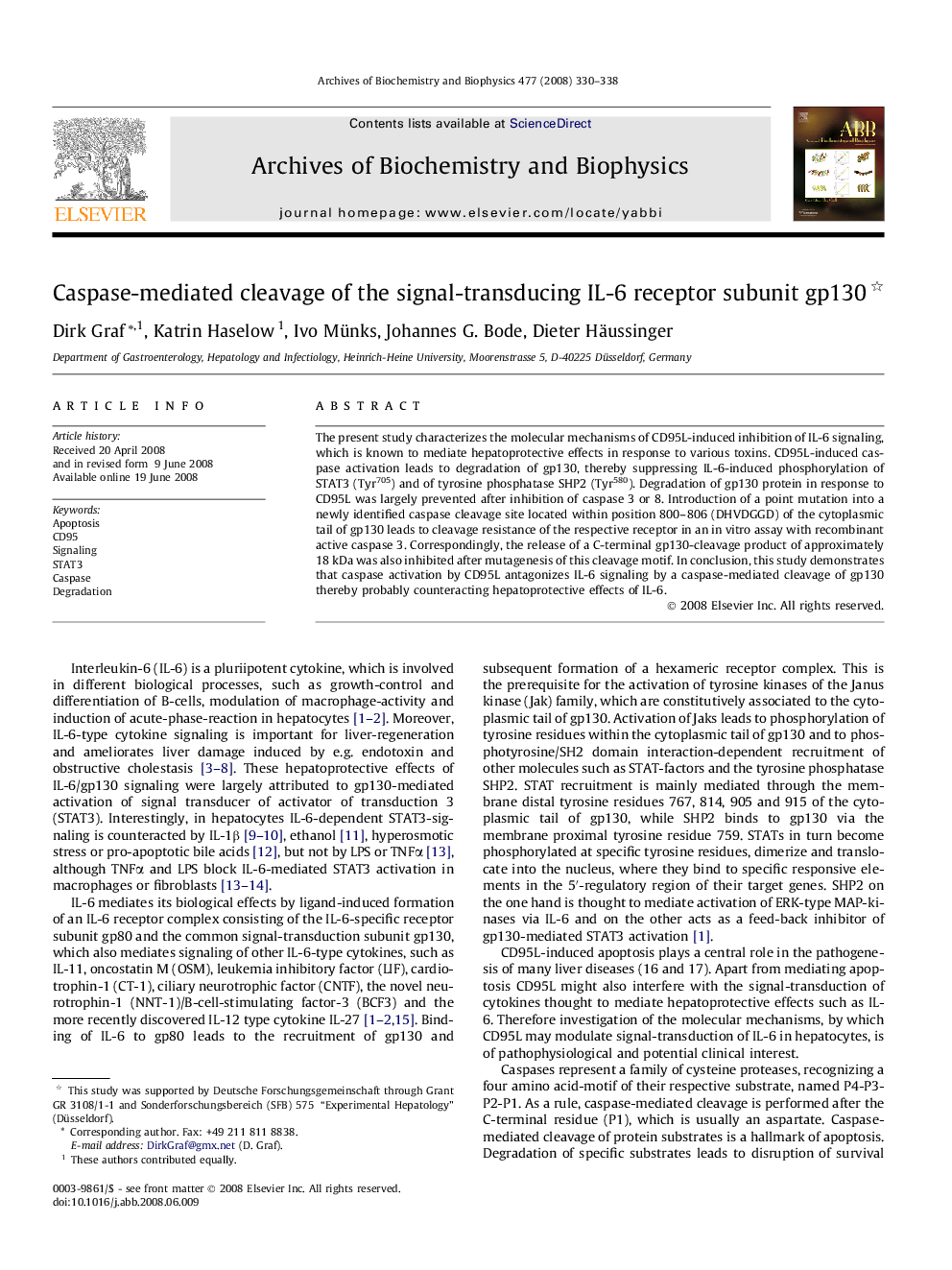| Article ID | Journal | Published Year | Pages | File Type |
|---|---|---|---|---|
| 1926595 | Archives of Biochemistry and Biophysics | 2008 | 9 Pages |
The present study characterizes the molecular mechanisms of CD95L-induced inhibition of IL-6 signaling, which is known to mediate hepatoprotective effects in response to various toxins. CD95L-induced caspase activation leads to degradation of gp130, thereby suppressing IL-6-induced phosphorylation of STAT3 (Tyr705) and of tyrosine phosphatase SHP2 (Tyr580). Degradation of gp130 protein in response to CD95L was largely prevented after inhibition of caspase 3 or 8. Introduction of a point mutation into a newly identified caspase cleavage site located within position 800–806 (DHVDGGD) of the cytoplasmic tail of gp130 leads to cleavage resistance of the respective receptor in an in vitro assay with recombinant active caspase 3. Correspondingly, the release of a C-terminal gp130-cleavage product of approximately 18 kDa was also inhibited after mutagenesis of this cleavage motif. In conclusion, this study demonstrates that caspase activation by CD95L antagonizes IL-6 signaling by a caspase-mediated cleavage of gp130 thereby probably counteracting hepatoprotective effects of IL-6.
